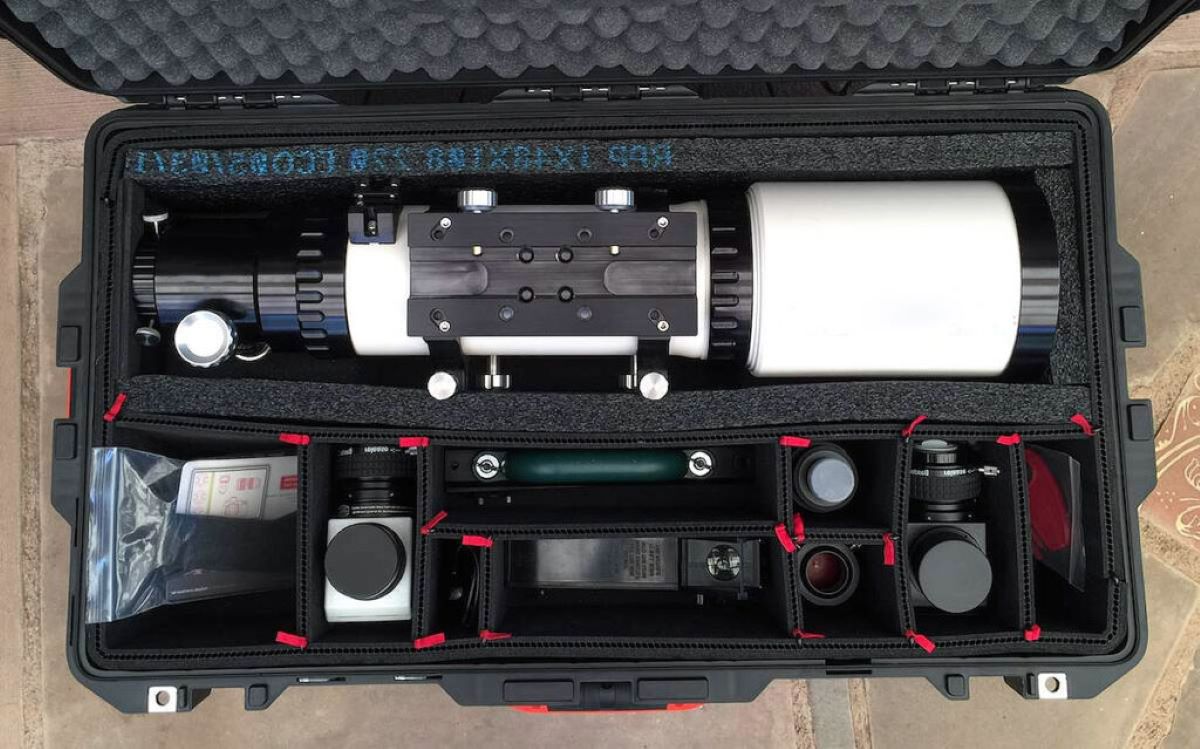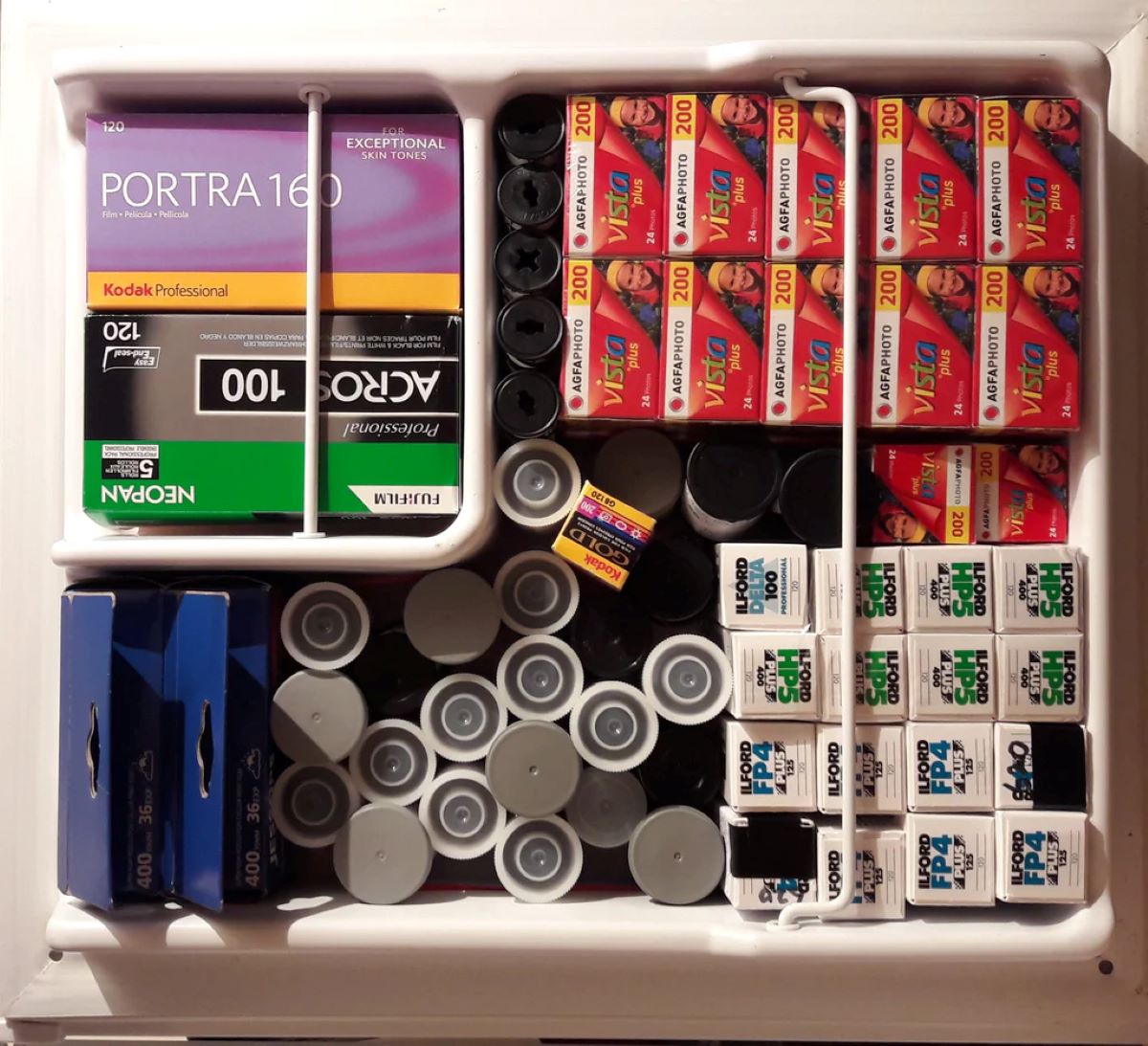

Articles
How To Store Sardines
Modified: December 7, 2023
Learn effective techniques for storing sardines in this comprehensive guide. Discover helpful articles and tips to extend the shelf life of your favorite seafood.
(Many of the links in this article redirect to a specific reviewed product. Your purchase of these products through affiliate links helps to generate commission for Storables.com, at no extra cost. Learn more)
Introduction
Sardines are a popular and nutritious seafood option that can be enjoyed in a variety of ways. Whether you catch them fresh or buy them from a local fish market, properly storing sardines is essential to maintain their flavor and quality. In this article, we will explore different methods for storing sardines, including freezing, canning, smoking, pickling, and storing in olive oil. By following these guidelines, you can ensure that your sardines stay fresh and delicious for longer periods.
Before we delve into the storage techniques, it’s important to choose fresh sardines to begin with. Fresh sardines should have bright eyes, shiny scales, and a firm texture. Look for sardines that have a clean, oceanic smell, rather than a strong, fishy odor. Once you have selected the freshest sardines available, you can proceed with the storage process.
Key Takeaways:
- Properly storing sardines is crucial for maintaining their flavor and quality. Choose fresh sardines, clean and gut them, then explore methods like freezing, canning, smoking, pickling, or storing in olive oil to enjoy them for longer periods.
- Experiment with different storage methods and recipes to make the most out of your stored sardines. Follow proper procedures, maintain hygiene, and prioritize freshness to savor the delightful taste of sardines throughout the year.
Read more: How To Store Store-Bought Bread
Choosing Fresh Sardines
When it comes to sardines, freshness is key. The quality of the sardines you choose will greatly impact the taste and texture of your final dish. Here are some tips for selecting the freshest sardines:
- Look for sardines with bright, clear eyes. This is a sign of freshness and indicates that the sardines were recently caught.
- Inspect the scales. Fresh sardines should have shiny, intact scales that cling tightly to the skin. Avoid sardines with dull or flaky scales.
- Check the smell. Fresh sardines should have a pleasant, briny odor reminiscent of the ocean. Avoid sardines with a strong, fishy smell.
- Feel the texture. Fresh sardines should be firm to the touch, with resilient flesh. Avoid sardines that feel soft or mushy.
- Consider the size. Sardines come in varying sizes, and the size you choose depends on your preference and the specific recipe. Smaller sardines are generally more tender and have a milder flavor, while larger sardines are meatier and have a stronger taste.
It’s important to note that sardines are highly perishable, so it’s best to purchase them on the day you plan to use them or freeze them immediately. If you’re unable to find fresh sardines, frozen sardines can be a good alternative.
Now that you know how to choose the freshest sardines, let’s move on to the next step: cleaning and gutting the sardines.
Cleaning and Gutting Sardines
Cleaning and gutting sardines is an important step in preparing them for storage or cooking. While some people prefer to leave the scales intact, it’s generally recommended to remove them to enhance the texture and taste of the sardines. Here is a step-by-step guide to cleaning and gutting sardines:
- Start by rinsing the sardines under cold running water to remove any surface debris or slime.
- Hold a sardine firmly by the head and use a fish scaler or the back of a knife to scrape off the scales. Work from the tail towards the head, making sure to cover both sides of the fish.
- Once the scales are removed, use a sharp knife to make a shallow incision along the belly of the sardine. Be careful not to cut too deep, as you want to avoid puncturing the internal organs.
- With your thumb or the handle of the knife, carefully lift the belly flap and pull out the innards, including the guts and the dark-colored membrane known as the “bloodline.”
- Rinse the cavity of the sardine under cold water to remove any remaining blood or debris.
- Pat the sardines dry with a paper towel before proceeding with the desired storage method.
It’s important to note that sardines can be quite delicate, so handle them with care to prevent the flesh from breaking or tearing during the cleaning process.
Now that your sardines are cleaned and gutted, you can proceed with the storage method of your choice. In the following sections, we will explore various methods for storing sardines, including freezing, canning, smoking, pickling, and storing in olive oil.
Freezing Sardines
Freezing sardines is a convenient and effective method for long-term storage. Freezing not only preserves the freshness of the sardines but also helps maintain their flavor and texture. Here’s how to freeze sardines:
- Ensure that your sardines are cleaned and gutted before freezing. Make sure they are dry to prevent ice crystals from forming and causing freezer burn.
- If desired, you can season the sardines with salt, pepper, or your favorite herbs and spices before freezing. This will add extra flavor to the fish.
- Place the sardines in a single layer on a baking sheet lined with parchment paper or plastic wrap. Make sure they are not touching each other to prevent them from sticking together.
- Place the baking sheet in the freezer and allow the sardines to freeze for about 1-2 hours or until they are firm to the touch.
- Once the sardines are partially frozen, transfer them to a sealed freezer-safe bag or container. Remove any excess air from the bag to minimize the risk of freezer burn.
- Label the bag or container with the date of freezing to keep track of the storage time.
- Return the sardines to the freezer and store them at a temperature of 0°F (-18°C) or below.
Frozen sardines can be stored for up to 3 months without significant loss of quality. When you’re ready to use the frozen sardines, simply thaw them overnight in the refrigerator. Avoid thawing them at room temperature, as this can promote bacterial growth.
Freezing is a great option if you have a large quantity of sardines or want to enjoy them throughout the year, even when they are not in season. However, keep in mind that freezing can affect the texture of the sardines, so they may not be as firm as fresh ones. Nevertheless, frozen sardines can still be used in a variety of dishes, such as grilling, baking, or frying.
Now that you know how to freeze sardines, let’s explore another method: canning.
Canning Sardines
Canning sardines is a fantastic way to preserve their flavor and extend their shelf life. Canned sardines are versatile and can be used in a variety of recipes, from sandwiches and salads to pasta dishes and dips. Here’s a step-by-step guide on how to can sardines:
- Start by cleaning and gutting the sardines, following the instructions mentioned earlier.
- Prepare your canning jars by sterilizing them. This can be done by submerging the jars and lids in boiling water for a few minutes or by running them through a dishwasher cycle.
- Meanwhile, prepare a brine solution by combining water, vinegar, salt, and any desired seasoning such as herbs, spices, or lemon slices, in a large pot. Bring the brine to a boil.
- Once the cans are sterilized, carefully pack the cleaned sardines tightly into the jars, leaving some headspace at the top.
- Pour the hot brine solution into the jars, covering the sardines completely while maintaining the headspace. Use a clean utensil to remove any air bubbles.
- Wipe the rims of the jars with a clean, damp cloth to remove any brine residue. Place the lids on the jars and tighten them securely.
- Carefully place the jars in a canning pot or large stockpot filled with enough water to cover the lids by at least one inch.
- Bring the water to a boil and process the jars in a boiling water bath for the recommended time according to your canning recipe and altitude.
- After the processing time is complete, carefully remove the jars from the water bath and place them on a towel-lined countertop to cool.
- Allow the jars to cool completely before checking the lids for a proper seal. The lids should be slightly concaved and should not flex or move when pressed.
- Label the jars with the date and contents before storing them in a cool, dark place. Canned sardines can typically be stored for up to 1-2 years.
Canned sardines make a convenient pantry staple and can be enjoyed as a quick snack or used as a delicious addition to various dishes. Remember to always use proper canning techniques and follow a trusted recipe to ensure food safety.
Now that you’re familiar with canning sardines, let’s move on to another method: smoking.
Store sardines in a cool, dry place away from direct sunlight. Once opened, transfer leftovers to an airtight container and refrigerate for up to 3 days.
Read more: How To Store Basil From Grocery Store
Smoking Sardines
Smoking sardines adds a distinct smoky flavor to the fish, making them incredibly flavorful and versatile. Smoked sardines can be enjoyed on their own as a delicious snack or used in salads, pastas, spreads, and more. Here’s how you can smoke sardines at home:
- Begin by preparing the sardines. Clean and gut them, removing any scales and innards as mentioned earlier. Rinse the sardines thoroughly and pat them dry with a paper towel.
- Next, you’ll need to brine the sardines. In a large bowl, mix salt, sugar, and any desired spices or herbs. Toss the sardines in the brine, ensuring they are fully coated. Let them sit in the brine for about 30 minutes to an hour.
- While the sardines are brining, prepare your smoker. If using a charcoal or wood smoker, preheat it to a temperature of around 200°F (93°C). If using an electric or gas smoker, follow the manufacturer’s instructions for preheating.
- Once the smoker is at the desired temperature, lightly oil the grill grates to prevent the sardines from sticking. Remove the sardines from the brine, pat them dry, and place them on the grill grates.
- Close the smoker and let the sardines smoke for approximately 1 to 2 hours, or until they reach an internal temperature of 145°F (63°C).
- Throughout the smoking process, you can add soaked wood chips or chunks to enhance the smoky flavor. Popular options include hickory, applewood, or mesquite.
- Once the sardines are smoked to perfection, remove them from the smoker and let them cool for a few minutes before serving or storing.
Smoked sardines can be enjoyed immediately or stored in an airtight container in the refrigerator for up to a week. They make a fantastic addition to salads, pasta dishes, sandwiches, or can be simply enjoyed on their own with a squeeze of lemon juice.
Now that you know how to smoke sardines, let’s explore another method: pickling.
Pickling Sardines
Pickling sardines is a wonderful way to preserve them while infusing them with tangy and flavorful brine. Pickled sardines make a great addition to charcuterie boards, sandwiches, and salads. Here’s a simple method for pickling sardines:
- Start by cleaning and gutting the sardines, ensuring they are free from scales and innards. Rinse them thoroughly and pat them dry with a paper towel.
- In a saucepan, combine equal parts vinegar and water. The vinegar can be white wine vinegar, apple cider vinegar, or rice vinegar, depending on your preference.
- Add flavorings to the brine. This can include spices like peppercorns, mustard seeds, dill, bay leaves, or red pepper flakes. Feel free to customize the brine to your taste.
- Bring the brine to a boil and let it simmer for a few minutes to allow the flavors to meld together.
- Meanwhile, pack the cleaned sardines into sterilized jars, making sure they are arranged tightly and without any excess air gaps.
- Carefully pour the hot brine into the jars, completely covering the sardines. Leave about 1/2 inch of headspace at the top.
- Seal the jars tightly with lids and let them cool on the countertop.
- Once cooled, transfer the jars to the refrigerator and let the sardines pickle for at least 24 to 48 hours before enjoying them. The longer they pickle, the more flavorful they will become.
Pickled sardines can be stored in the refrigerator for several weeks. As they pickle, the flavors will develop and intensify. They can be enjoyed on their own, served alongside crusty bread, or used as a topping for salads and sandwiches.
Now that you know how to pickle sardines, let’s move on to another method: storing sardines in olive oil.
Storing Sardines in Olive Oil
Storing sardines in olive oil is a traditional method that not only preserves the fish but also imparts a rich and flavorful taste. This method creates a delicious pantry staple that can be used in various culinary creations. Here’s how you can store sardines in olive oil:
- Begin by cleaning and gutting the sardines, making sure to remove any scales and innards. Rinse them well and pat them dry with a paper towel.
- Prepare a sterilized jar with an airtight lid for storing the sardines.
- Layer the bottom of the jar with fresh herbs, such as rosemary, thyme, or bay leaves, for added flavor.
- Place the sardines in the jar, arranging them tightly and without overlapping.
- Drizzle extra virgin olive oil over the sardines, ensuring that they are completely submerged. The olive oil acts as a preservative and helps to enhance the flavor and texture of the fish.
- Seal the jar tightly with the lid and store it in a cool, dark place, such as a pantry or cellar.
- Allow the sardines to marinate in the olive oil for at least 24 hours before consuming them. This allows the flavors to meld together.
Stored properly, sardines in olive oil can last for several months. It’s important to note that contamination can occur if the sardines are exposed to air or if the jar is not tightly sealed, so ensure that the jar is securely closed after each use.
Sardines stored in olive oil make for a delectable snack on their own, can be added to salads, or used as a topping for pizzas or bruschetta. The infused olive oil can also be used as a dressing or for cooking.
Now that you know how to store sardines in olive oil, let’s move on to some general tips for storing sardines to ensure their freshness and quality.
Tips for Storing Sardines
To ensure the freshness and quality of stored sardines, here are some helpful tips to keep in mind:
- Temperature: Sardines are highly perishable and should be stored in a cool environment. Whether you’re freezing, canning, pickling, or storing them in olive oil, maintaining a consistent temperature is crucial. Keep sardines in the refrigerator or freezer to prevent spoilage.
- Proper Packaging: When storing sardines, it’s important to use proper packaging to maintain their freshness. Whether using freezer bags, canning jars, or airtight containers, ensure that they are sealed tightly to prevent air and moisture from entering.
- Labeling and Dating: Whether you’re freezing, canning, pickling, or storing sardines in olive oil, always label the containers or packages with the date of storage. This allows you to keep track of their shelf life and ensures that you use the oldest sardines first.
- Use Quality Ingredients: When pickling or storing sardines in olive oil, use high-quality ingredients. Opt for fresh herbs, good-quality olive oil, and vinegars to enhance the flavor and overall quality of the stored sardines.
- Hygiene and Cleanliness: Ensure that all utensils, jars, and working surfaces are clean and free from contaminants when handling sardines. This helps prevent bacterial growth and maintains the integrity of the stored fish.
- Check for Spoilage: Before using stored sardines, always check for any signs of spoilage. This includes off odors, unusual discoloration, or slimy textures. If any of these signs are present, discard the sardines to avoid foodborne illnesses.
- Rotate and Use within Timeframe: Sardines, like any other perishable food, should be consumed within a reasonable timeframe. Depending on the storage method, sardines can last from a few days to several months. It’s always recommended to use the oldest stored sardines first and rotate your stock accordingly.
- Experiment with Recipes: Storing sardines opens up a world of culinary possibilities. Don’t be afraid to experiment with different recipes and preparations to make the most out of your stored sardines.
By following these tips, you can ensure that your sardines remain fresh, flavorful, and safe to consume even after extended periods of storage.
Now that you are well-equipped with various methods for storing sardines, it’s time to put your knowledge into practice and enjoy the versatility and deliciousness of this remarkable seafood.
Safe and happy storing!
Read more: How To Store Jordans
Conclusion
Storing sardines properly is essential to preserve their flavor, texture, and nutritional benefits. Whether you choose to freeze, can, smoke, pickle, or store them in olive oil, each method offers a unique way to extend the shelf life of sardines while enhancing their taste. By following the guidelines outlined in this article, you can ensure that your stored sardines remain fresh, delicious, and ready to be incorporated into a variety of dishes.
When selecting sardines, prioritize freshness by looking for bright eyes, shiny scales, a clean briny scent, and firm texture. Cleaning and gutting the sardines before storage helps maintain their quality and prevents deterioration. Each method, whether it’s freezing, canning, smoking, pickling, or storing in olive oil, has its own benefits and flavor profiles, allowing you to choose the best method based on your preferences and intended use.
Remember to follow the proper procedures for each storage method, such as using appropriate packaging, labeling, and maintaining the recommended storage temperature. Pay attention to hygiene and cleanliness to ensure the safety of the stored sardines. Regularly check for any signs of spoilage and prioritize using the oldest stored sardines first to maintain freshness.
Experiment with various recipes to make the most of your stored sardines. Whether you enjoy them as a standalone snack, incorporate them into salads, sandwiches, or pasta dishes, or use them to elevate your flavor combinations, sardines provide a versatile and nutritious option for any culinary enthusiast.
By employing the methods and tips outlined in this article, you can enjoy the delightful taste of sardines throughout the year, even when they are not in season. So go ahead, stock up on sardines, and explore the endless possibilities of this remarkable and delectable seafood!
Happy storing and savoring!
Frequently Asked Questions about How To Store Sardines
Was this page helpful?
At Storables.com, we guarantee accurate and reliable information. Our content, validated by Expert Board Contributors, is crafted following stringent Editorial Policies. We're committed to providing you with well-researched, expert-backed insights for all your informational needs.














0 thoughts on “How To Store Sardines”